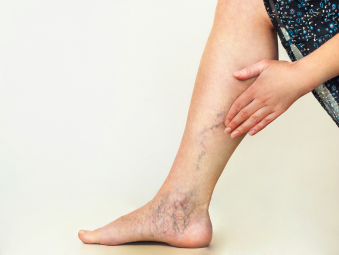Overview: Varicose Veins

Varicose veins are enlarged, swollen, and twisted veins that usually appear blue or dark purple. They often occur in the legs and can be seen through the skin. Varicose veins develop when the valves within the veins weaken or become damaged, causing blood to pool and the veins to enlarge.
Several factors contribute to the development of varicose veins, including:
- Heredity: A family history of varicose veins increases the likelihood of developing them.
- Age: The risk of varicose veins increases with age as the veins lose elasticity and become more prone to damage.
- Gender: Women are more likely to develop varicose veins than men, partly due to hormonal changes during puberty, pregnancy, and menopause.
- Pregnancy: Pregnancy increases the volume of blood in the body and puts pressure on the veins, which can lead to the development or worsening of varicose veins.
- Obesity: Excess weight puts additional pressure on the veins, increasing the risk of varicose veins.
- Prolonged standing or sitting: Jobs or activities that require long periods of standing or sitting can increase pressure on the veins and contribute to the development of varicose veins.
In most cases, varicose veins are not a serious medical condition but can cause discomfort or cosmetic concerns. However, in some cases, they may be a sign of underlying venous insufficiency or other circulatory problems. If you’re experiencing symptoms of varicose veins, it’s advisable to consult a healthcare professional for evaluation and appropriate management.
